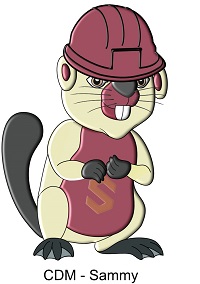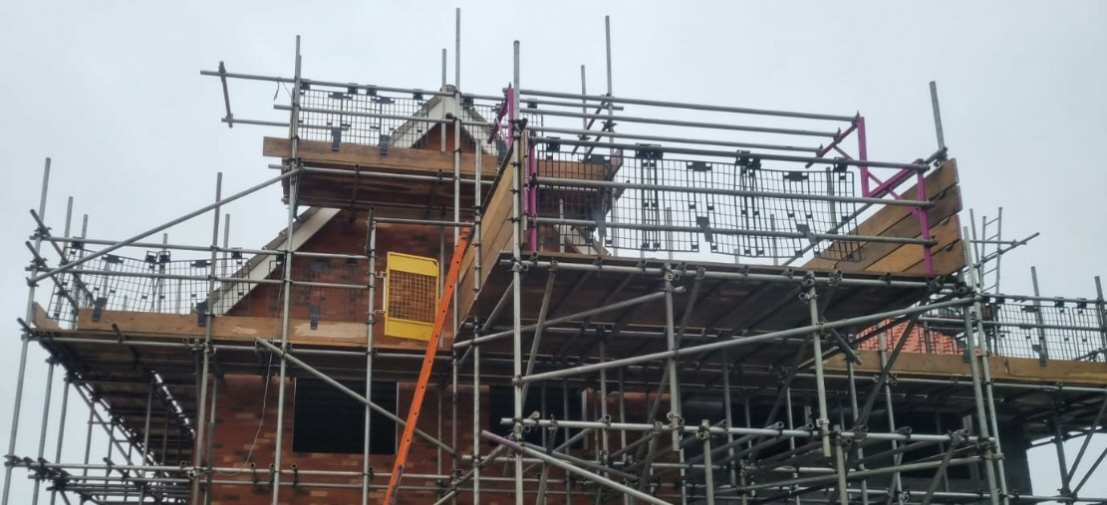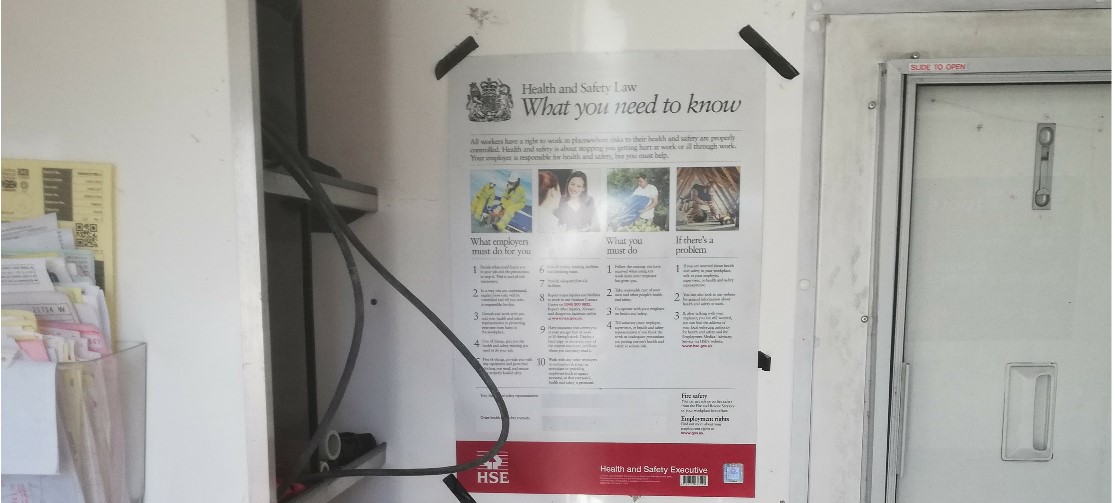CDM Regulations 2015 CDM Designer Duties
Article Author: Dr. Khalid Bhutto - Director Safescope - 1 December 2022
Contents
Who are designers on a construction project?
Designers are those, who as part of a business, prepare or modify designs for a building, product or system relating to construction work. The designers include architects, consulting engineers, quantity surveyors, chartered surveyors, interior designers, temporary works engineers, technicians or anyone who specifies or alters a design. The designers are defined as one of the duty holders in
If a
What are CDM Designer Duties?
“
Why Designers have CDM Duties?
The Health and Safety Executive (HSE) considers the role of the
Decisions taken by
CDM Designers Duties ensure that Designers are accountable for the impact of their decisions on health and safety on construction projects.
In addition to
What Designers have to do?
In a nutshell, any
1. Make Client aware of their CDM Duties,
2. Eliminate foreseeable design risks,
3. Reduce risks, if elimination not possible,
4. Provide design risks information,
5. Provide Health & Safety File information.
1. Make Client aware of their CDM Duties,
2. Eliminate foreseeable design risks,
3. Reduce risks, if elimination not possible,
4. Provide design risks information,
5. Provide Health & Safety File information.
CDM Designer Duties* in Details
Regulation 8 and 9 of the CDM Regulations 2015 list the duties of a
Designers must not accept the appointment (asDesigner ), unless have the skills, knowledge and experience, and, if an organisation, the organisational capability, necessary to fulfil the role.(Regulation 8(2))Designers must co-operate with other parties working on a project at the same or on adjoining construction site.(Regulation 8(4))Designers must not commence design for any project unless satisfied that theclient is aware of their duties under CDM 2015 Regulations.(Regulation 9(1))Designers must eliminate foreseeable health and safety risks, so far as is reasonably practicable and taking intoGeneral Principles of Prevention andPre-construction Information (PCI) , when preparing or modifying a design.(Regulation 9(2))Designers must take the following steps, if it is not possible to eliminate the above health and safety risks:(Regulation 9(3)(a,b,c))- Take steps to reduce or, if that is not possible control the risks through subsequent design process,
- Provide information about the above risks to the
Principal Designer , and - Ensure appropriate information is included in the
Health and Safety File .
Designers must take all reasonable steps to provide sufficient information with the design about the design, construction and maintenance of the structure to adequately assistClient , otherDesigners and Contractors to comply with their duties under theCDM Regulations .(Regulation 9(4))Designers must ensure that the above information is comprehensible and provided as soon as is practicable.(Regulation 8(6)))
* Please note that the

Practical Explanation of CDM Designer Duties
The above legal duties of a Designer are briefly explained as follows:
1. Designers must not accept the appointment (as Designer ), unless have the skills, knowledge and experience, and, if an organisation, the organisational capability, necessary to fulfil the role. (Regulation 8(2))
The following steps are suggested to discharge the above duty:
Prepare a practice profile detailing your skills, knowledge and experience and if applicable, organisation capability.
Keep up-to-date CVs of your staff including evidence of their current professional memberships.
Avoid type and size of projects or design situations where you may not have necessary skills, knowledge, experience or organisational capability, seek further advice if necessary.
Please check that any
designer(s) you appoint have skills, knowledge, experience and if an organisation, the organisation capability to fulfil the role (this can be checked by sending them simple assessment questionnaire).
2. Designers must co-operate with other parties working on a project at the same or on adjoining construction site. (Regulation 8(4))
The following steps are suggested to discharge the above duty:
Communicate with other
designers on the project.Carryout design review meetings with other designers involved in the project.
Co-operate with
Principal Designer appointed for the project.
3. Designers must not commence design for any project unless satisfied that the client is aware of their duties under CDM 2015 Regulations. (Regulation 9(1))
The following steps are suggested to discharge the above duty:
Refer your
Client to ourClient CDM Duties page for information about their duties under theCDM Regulations . We have developed this information in a rather simple and user friendly manner to make it easy forClients ofconstruction project to understand and fulfil their duties.- Alternatively, prepare Client Duties under the
CDM Regulations (also available from Safescope on request) or you can provide them withCITB CDM Guidance for Clients . Discuss the above Duties in meetings with
Client and formally send the Duties to them by email (keep the evidence).Explain to the
Client that for all projects wheremore than one contractor is involved aPrincipal Designer andPrincipal Contractor needs to be appointed.In addition, please remind the Client that there are Client Duties (except in case of Domestic Client) which are to be fulfilled by the Client (if the need be Safescope can help with this).
In case of
Domestic Client , theClient CDM Duties will pass on to the Contractor or Principal Contractor.
4. Designers must eliminate foreseeable health and safety risks, so far as is reasonably practicable and taking into General Principles of Prevention and Pre-construction Information (PCI) , when preparing or modifying a design. (Regulation 9(2))
The following steps are suggested to discharge the above duty:
Provide
training to your staff on Designer Duties underCDM Regulations (including Design Risk Management) – Safescope can assist with this, if required.At each distinct stage of the design, identify the health and safety risks relevant to your design at construction, maintenance, cleaning and use as a workplace (where relevant).
Consider CITB RAG (Red, Amber and Green) Lists or see
HSE CDM Designer RAG Lists for information and action.Pre-construction Information (PCI) may help in identifying the above risks.Go through each identified risks and aim to eliminate where ever possible.
You may like to use a
Designer Risk Assessments (DRA) to record the above. Safescope can provide a simple template for DRAs, if required.
5. Designers must take the following steps, if it is not possible to eliminate the above health and safety risks: (Regulation 9(3)(a,b,c))
- Take steps to reduce or, if that is not possible control the risks through subsequent design process,
- Provide information about the above risks to the
Principal Designer , and - Ensure appropriate information is included in the
Health and Safety File .
The following steps are suggested to discharge the above duty:
There are practical ways and alternative methods available to reduce and control the standard health and safety risks. Research the available options. Please ask Safescope for assistance, if required.
Take advice from a manufacturer or a specialist contractor to find the alternative solutions / options.
Record all identified health and safety risks on drawings, by completing a
Designer Risk Assessments (DRA) or making separate notes.Send the above recorded information to the
Principal Designer as soon as possible.Review the above information, if design changes or alterations are made and re-issue it to the
Principal Designer .Any
residual health and safety risks which will still remain after the site work completion (during the maintenance, cleaning and use of structure as a workplace) must be notified to thePrincipal Designer orPrincipal Contractor (wherePrincipal Designer's appointment has finished) for inclusion in theHealth and Safety File .
6. Designers must take all reasonable steps to provide sufficient information with the design about the design, construction and maintenance of the structure to adequately assist Client , other Designers and Contractors to comply with their duties under the CDM Regulations . (Regulation 9(4))
The following steps are suggested to discharge the above duty:
Provide details of design specifications, calculations and assumptions made in your design to other
Designers ,Principal Designer ,Principal Contractor and other Contractors (where relevant).Include notes on the drawings for health and safety risks for information and action by
Principal Contractor and relevant Contractors.Complete
Designer Risk Assessments (DRA) to cover design, construction, maintenance, cleaning and use of structure as a workplace (if relevant) and send this information toClient , otherDesigners ,Principal Designer ,Principal Contractor and relevant Contractors.Provide any relevant information available with you (e.g. as record drawings, existing investigation surveys etc) and any identified post site work completion
residual health and safety risks to thePrincipal Designer orPrincipal Contractor (wherePrincipal Designer's appointment has finished) for inclusion in theHealth and Safety File .
7. Designers must ensure that the above information is comprehensible and provided as soon as is practicable. (Regulation 8(6)))
The following steps are suggested to discharge the above duty:
The design health and safety risks related information produced as above should be to the point and effective in managing the risks.
Do not produce any generic, unnecessarily long and irrelevant information.
Do not wait until chased, send the information to the relevant parties as soon as possible.
Other CDM Guidance
In addition to this, we at (Safescope) have also produced a number of other in-depth CDM Guides on various related topics. These guides are available on this website. Please follow the Link .
Need help?

We (Safescope) specialise in CDM and Construction Health and Safety and provide proactive yet cost effective CDM Principal Designer , Client CDM Advisor , Principal Contractor CDM Advisor roles and various CDM Training Courses . Please get in contact for an informal chat or a hassle free prompt fee proposal.
Our Contact Details
For further information and a prompt hassle free fee proposal please contact us as follows:
- Please complete details in the
'Safescope CDM Fee Proposal' form . - Alternatively, please download and send us a completed
CDM Enquiry Form and we will get back to you promptly. - If you would rather talk to us then please contact Lindsey or Khalid on
01473 407020 - You can also get in touch with us by
contact@safescope.com

Director
T: 01473 407020
M: 07818 288122



